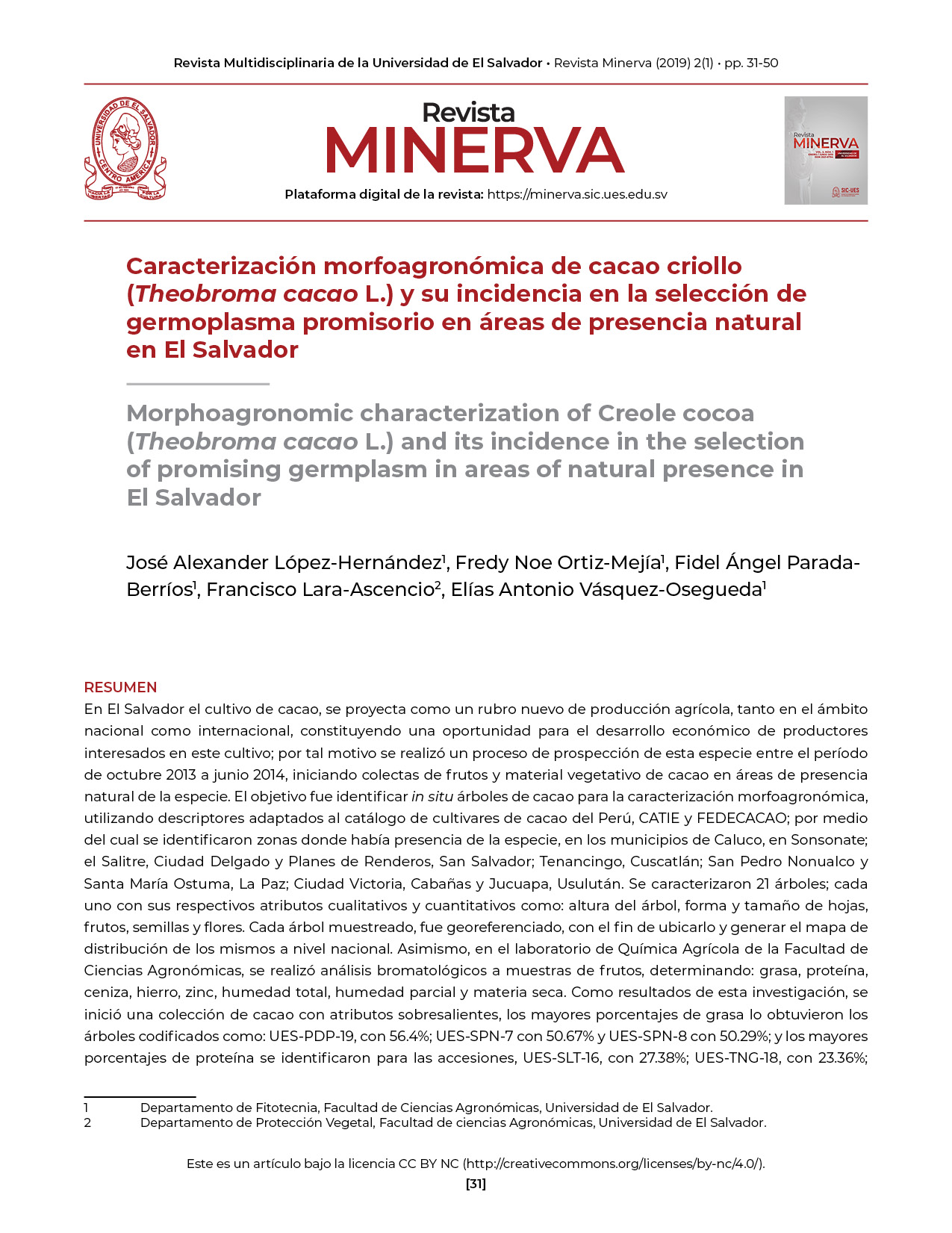Abstract
In El Salvador, the cultivation of cocoa is projected as a new category of agricultural production both nationally and internationally. It constitutes an opportunity for the economic development of producers interested in this crop. For this reason, a process of prospecting of this species was carried out between the period of October 2013 to June 2014, starting collections of fruits and vegetative material of cocoa in areas of natural presence of the species. The objective was to identify cocoa trees in situ for morphoagronomic characterization, using descriptors adapted to the catalog of cocoa cultivars from Peru, CATIE and FEDECACAO. Areas where the species was present were identified, in the municipalities of Caluco, in Sonsonate; El Salitre, Ciudad Delgado and Renderos Plans, San Salvador; Tenancingo, Cuscatlán; San Pedro Nonualco and Santa María Ostuma, La Paz, Ciudad Victoria, Cabañas y Jucuapa, Usulután. 21 trees were characterized; each with their respective qualitative and quantitative attributes such as: tree height, shape and size of leaves, fruits, seeds and flowers. Each sampled tree was georeferenced, in order to locate it and generate the distribution map of them nationally. Also, in the Agricultural Chemistry laboratory of the Faculty of Agronomic Sciences, bromatological analyzes were carried out on fruit samples, determining: fat, protein, ash, iron, zinc, total humidity, partial humidity and dry matter. As a result of this investigation, a cocoa collection with outstanding attributes was initiated, the highest percentages of fat were obtained by trees coded as: UES-PDP-19, with 56.4%; UES-SPN-7 with 50.67% and UES-SPN-8 with 50.29%; and the highest percentages of protein were identified for accessions, UES-SLT-16, with 27.38%; UES-TNG-18, with 23.36%; and UES-SAL-3 with 21.31%; parameters that are important when making production programs, genetic improvement and in the preservation of this germplasm.

This work is licensed under a Creative Commons Attribution 4.0 International License.
Copyright (c) 2019 Authors who publish in Revista Minerva agree to the following terms: Authors continue as owners of their work, assigning only dissemination rights to Minerva Magazine under the standards of the Creative Commons Attribution 4.0 International License (CC BY 4.0). This license allows others to mix, adapt and build upon the work for any purpose, including commercially, and although new works must also acknowledge the initial author, they do not have to license derivative works under the same terms.




